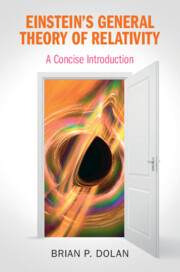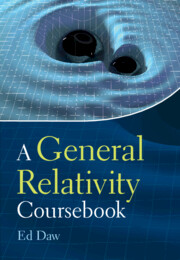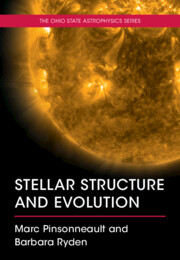Refine listing
Actions for selected content:
16950 results
Frontmatter
-
- Book:
- Einstein's General Theory of Relativity
- Published online:
- 15 June 2023
- Print publication:
- 29 June 2023, pp i-iv
-
- Chapter
- Export citation
3 - Geodesics
-
- Book:
- Einstein's General Theory of Relativity
- Published online:
- 15 June 2023
- Print publication:
- 29 June 2023, pp 44-84
-
- Chapter
- Export citation
Dedication
-
- Book:
- Einstein's General Theory of Relativity
- Published online:
- 15 June 2023
- Print publication:
- 29 June 2023, pp v-vi
-
- Chapter
- Export citation
Appendix B - The Riemann Tensor
-
- Book:
- Einstein's General Theory of Relativity
- Published online:
- 15 June 2023
- Print publication:
- 29 June 2023, pp 178-186
-
- Chapter
- Export citation
Appendix E - Robertson-Walker Space-Time
-
- Book:
- Einstein's General Theory of Relativity
- Published online:
- 15 June 2023
- Print publication:
- 29 June 2023, pp 195-197
-
- Chapter
- Export citation
Preface
-
- Book:
- Einstein's General Theory of Relativity
- Published online:
- 15 June 2023
- Print publication:
- 29 June 2023, pp ix-x
-
- Chapter
- Export citation
1 - Introduction
-
- Book:
- Einstein's General Theory of Relativity
- Published online:
- 15 June 2023
- Print publication:
- 29 June 2023, pp 1-13
-
- Chapter
-
- You have access
- Export citation
5 - Einstein’s Field Equations
-
- Book:
- Einstein's General Theory of Relativity
- Published online:
- 15 June 2023
- Print publication:
- 29 June 2023, pp 119-125
-
- Chapter
- Export citation
Appendix A - Tensors of Type (p, q)
-
- Book:
- Einstein's General Theory of Relativity
- Published online:
- 15 June 2023
- Print publication:
- 29 June 2023, pp 177-177
-
- Chapter
- Export citation
References
-
- Book:
- Einstein's General Theory of Relativity
- Published online:
- 15 June 2023
- Print publication:
- 29 June 2023, pp 198-198
-
- Chapter
- Export citation
Appendix D - The Schwarzschild Metric
-
- Book:
- Einstein's General Theory of Relativity
- Published online:
- 15 June 2023
- Print publication:
- 29 June 2023, pp 192-194
-
- Chapter
- Export citation
Contents
-
- Book:
- Einstein's General Theory of Relativity
- Published online:
- 15 June 2023
- Print publication:
- 29 June 2023, pp vii-viii
-
- Chapter
- Export citation
6 - Solutions of Einstein’s Equations in Empty Space
-
- Book:
- Einstein's General Theory of Relativity
- Published online:
- 15 June 2023
- Print publication:
- 29 June 2023, pp 126-138
-
- Chapter
- Export citation
4 - The Geometry of Curved Spaces
-
- Book:
- Einstein's General Theory of Relativity
- Published online:
- 15 June 2023
- Print publication:
- 29 June 2023, pp 85-118
-
- Chapter
- Export citation
2 - Metrics
-
- Book:
- Einstein's General Theory of Relativity
- Published online:
- 15 June 2023
- Print publication:
- 29 June 2023, pp 14-43
-
- Chapter
- Export citation
Index
-
- Book:
- Einstein's General Theory of Relativity
- Published online:
- 15 June 2023
- Print publication:
- 29 June 2023, pp 199-204
-
- Chapter
- Export citation
Appendix C - The Energy-Momentum Tensor
-
- Book:
- Einstein's General Theory of Relativity
- Published online:
- 15 June 2023
- Print publication:
- 29 June 2023, pp 187-191
-
- Chapter
- Export citation

Einstein's General Theory of Relativity
- A Concise Introduction
-
- Published online:
- 15 June 2023
- Print publication:
- 29 June 2023

A General Relativity Coursebook
-
- Published online:
- 03 May 2023
- Print publication:
- 06 April 2023
-
- Textbook
- Export citation

Stellar Structure and Evolution
-
- Published online:
- 02 May 2023
- Print publication:
- 06 April 2023
-
- Textbook
- Export citation
